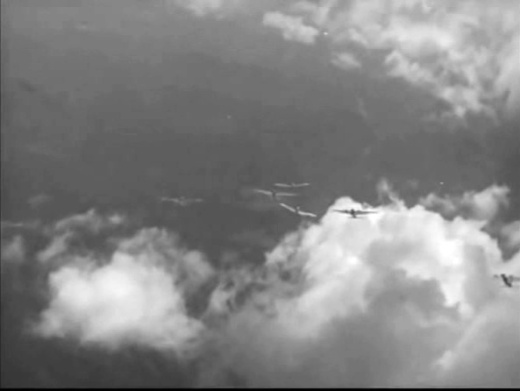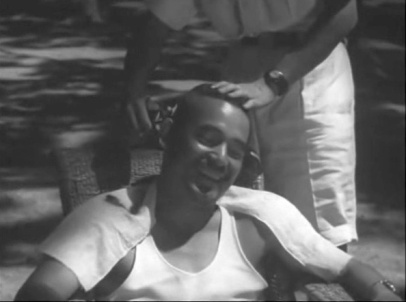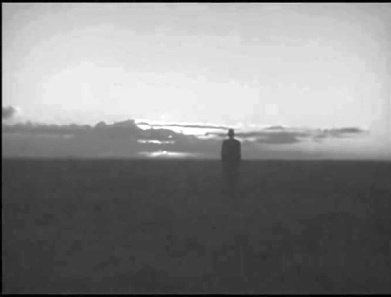
The squadron soars above the clouds
Released during the height of the war, this is clearly a propaganda film and is even labelled as such in the opening titles: a “national film” produced by the “Ministry of Information.” As such it is a strange hybrid of a movie, not quite able to make up its mind whether it is a dramatic feature or one of those re-creation documentaries we see on cable TV channels.
Col. Kato was real, the commander of one of the most admired squadrons in the Japanese Army Air Force. The Hayabusa was the model of their fighter, different from the Navy’s more famous Zero that was mostly carrier based. Esssentially, the movie follows the squadron from Kato’s arrival to take command through the arrival of their new planes, to their sorties in the 1941-42 campaigns against Singapore and in Malayia and Burma, until Kato’s own death in late ’42.
Unlike in The War at Sea, for example, there is some serious attempt to make Kato something of a rounded character, and we are able to identify at least a couple of his other officers, most notably the young Lieutenant who loves to take photos. We even see the men relaxing (there is even a Christmas tree in the mess), and it is clear that Kato has a remarkably genial relation with his men, who all respect and admire him.

The Colonel gets a public haircut
He sees himself as a first among equals, almost as we would expect to see from a combat unit commander in a similar American war movie.
But the movie seems determined to show us every single mission the squadron flew, stressing the documentary aspects but pretty much eliminating all the drama. Unlike The War at Sea, the air sequences seem very genuine. I only spotted models during one very brief night flight sequence. How much of the aerial work was restaged and how much of it is really good quality Army field photography I couldn’t begin to say, but the melding of the two sources together is very well done. Only the ground targets are obvious models.
Still, the oddest aspect of the film is the refusal to show any heroics.

The Colonel says a prayer for his missing men at sunset.
We see some serious dogfights, and we see see the squadron return and report men killed (most of whom we have never met and care nothing about) but we never see any individual battles. There are no “Enemy at three o’clock” or “Look out behind you Jake,” or “Dan! Dan! Answer me” or “Jump, you crazy fool” scenes that were all but obligatory in American air films. No one breaks formation to cover for his buddy in another crippled plane. We see dogfights from the ground but never from the view point of the pilots themselves. We don’t even see the line of bullet holes across the fuselage before a hero (or an enemy) slumps and the plane dives. Not even Kato’s own death in combat is shown, merely reported in a sequence of titles. For a nation whose films are awash with lone samurai warriors facing a noble death in battle, this is really strange.
The non-documentary scenes are directed by Kajiro Yamamoto with a leaden hand; no wonder Kurosawa, who worked as his assistant on a dozen pictures before 1941, said he learned everything about movie-making from one movie working for Naruse. Kato is Susumu Fujita, who spent the war years playing patriotic roles like this one.
Pingback: The War at Sea From Hawaii to Malay / Hawai — Maree oki kaisen (1942) | Japanonfilm
Pingback: Tank Commander Nishizumi / Nishizumi senshacho-den (1940) | Japanonfilm
Pingback: Militarists / Gunbatsu (1970) | Japanonfilm
Pingback: Roppa’s Honeymoon / Roppa no shinkon ryoko (1940) | Japanonfilm